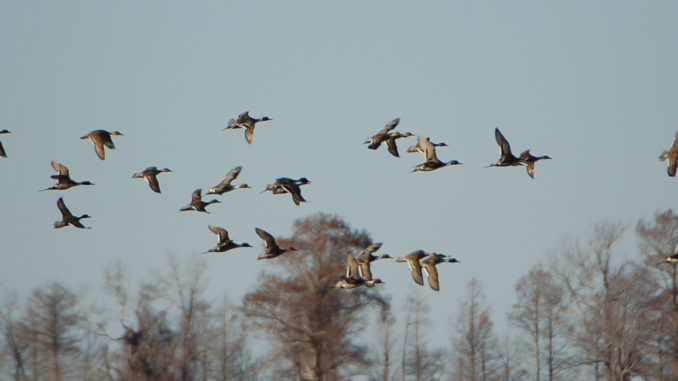
With species-specific bag limits, know ’em all
Wing shooters warmed their barrels last month on droves of mourning doves, and maybe a few hunters took-on Florida-style duck hunting in 80-degree weather for the early arriving blue-winged and green-winged teal. With the regular waterfowl seasons arriving shortly, waterfowl junkies better prepare for another bumper season.
The 2012 Waterfowl Breeding Survey conducted by the U.S. Fish and Wildlife Service and the Canadian Fish and Wildlife Service reported another bumper estimate of 48.6 million ducks — a 7-percent increase from last year and the highest estimate on record since the first breeding bird survey was conducted in 1955. While many of these ducks may head to the rest of the country, the Carolinas will get a chance at some of these feathered targets in a few weeks.
The Carolinas may not be viewed as a destination duck paradise compared to Mississippi and Central Flyway states, but they shouldn’t have too much to complain about. Hunters in the Carolinas collectively harvest more than a half-million ducks annually. While they take a variety of species each year, the most commonly-killed in both states are mallards, green-winged teal, lesser scaup, ring-necked ducks and wood ducks — simply because they are the most-available in state habitat. But 15 other duck species frequent the Atlantic flyway, including shoveler, black duck, pintail, red head, widgeon, ruddy duck and several others.
The U.S. Fish and Wildlife Service regulates the duck harvest by species, and many of the species available will have specific bag limits by species and gender. Not only should hunters be able to recognize different species in hand, but in flight. Luckily, they can anticipate what species will be available via the preferred habitat types. Puddle ducks, including black ducks and mallards, will prefer shallow marshes and swamps. Diving ducks, including scaup, red head and bufflehead will favor larger bays, rivers and sounds, but ducks don’t always follow the rules. Swamps with a rich food source will attract any number of species during the winter. Big-water divers will show up in tight quarters when unexpected. As the flocks begin to migrate into the state, many of these birds travel at night and venture off into unfamiliar places at the crack of dawn looking for a quick food source.
Ducks can be distinguished in flight by visible coloration, flight pattern, flocking behavior, silhouette, wing beat, and vocalizations. Hunters should learn the differences between the different duck species and the ones with a high probability of showing up within the decoys at first light.
The U.S. Fish and Wildlife Service proposed the following daily bag limits for the 2012-2013 season: six daily, including no more than 4 mallards (2 hens), 4 scoters, 3 wood ducks, 2 redheads, 2 hooded mergansers, 4 scaup, 1 black duck, 2 pintails, 1 canvasback, 1 mottled duck, and 1 fulvous whistling duck.
For more information on duck identification materials, view a U.S. Fish and Wildlife Service publication entitled, “Ducks at a distance: A waterfowl identification Guide” (www.npwrc.usgs.gov/resource/birds/duckdist/index.htm). Also, more information can be obtained at Ducks Unlimited (www.ducks.org), or S.C. DNR duck identification website (www.eregulations.com/southcarolina/hunting/waterfowl/ducks-of-south-carolina).




Be the first to comment